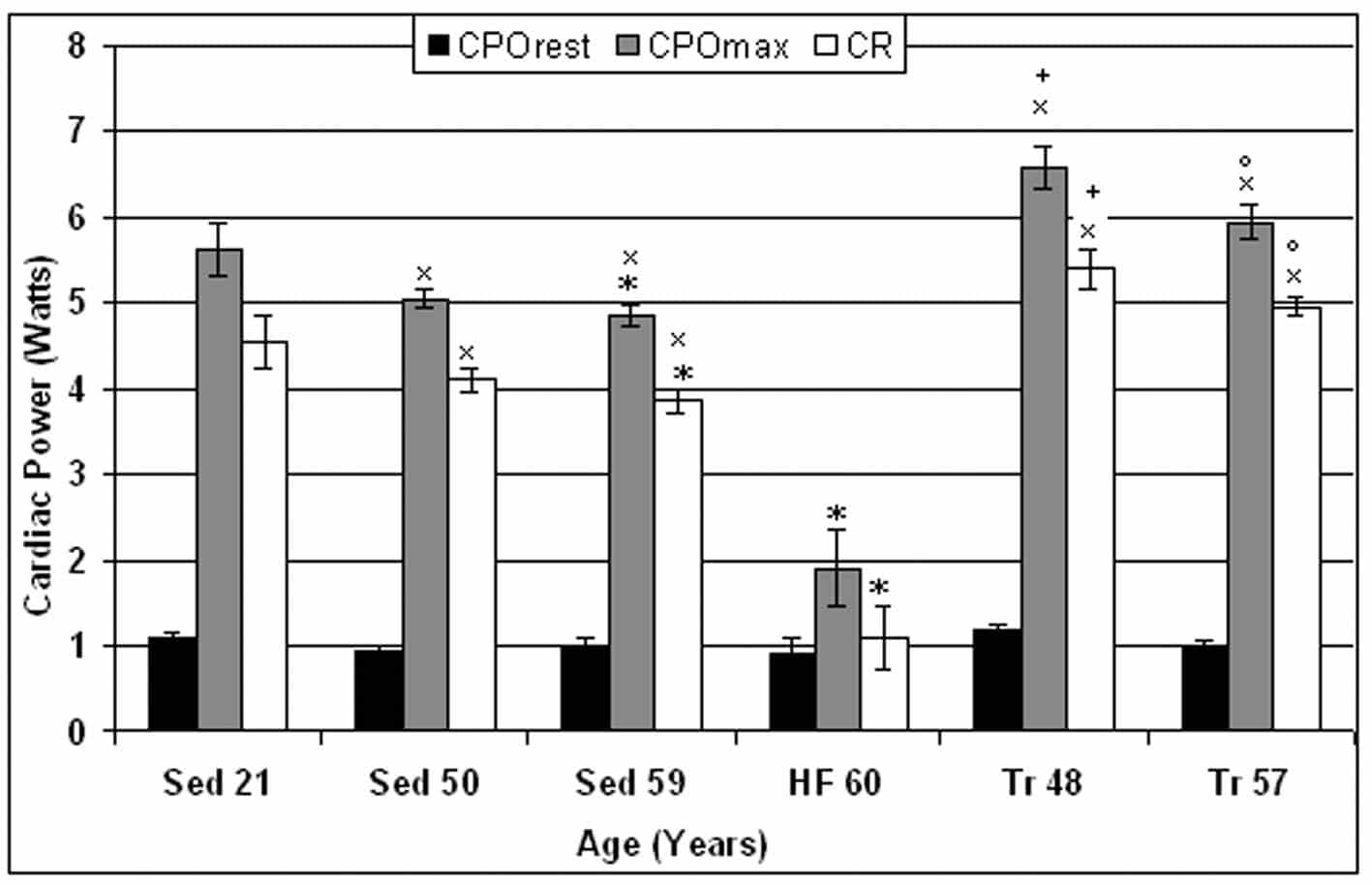The mammalian heart has a limited regenerative capacity (Anversa et al. 2002), so cardiomyocyte death, whether it occurs with normal ageing or ischaemic damage, results in a net loss of contractile cells. Furthermore, Olivetti et al. (1991) have reported a 33 % loss of cardiomyocytes between 20 and 70 years of age. This, together with a decrease in peak cardiac output, and blunted inotropic and chronotopic responses to catecholamines etc are known to occur with increasing age (Lakatta 2000). Cardiac power output (CPO) represents the overall function of the heart, measuring both its pressure and flow generating capacities. When determined at rest CPO (CPOrest) is around 1 watt (W) and like other indices of heart function fails to discriminate between age, fitness or heart failure (HF) (Fig. 1). It is only when the heart is maximally stimulated that true differences in CPO (CPOmax), and hence cardiac functional reserve (CR), become apparent (Fig. 1).
To test the hypothesis that healthy ageing is associated with a decrease in CPOmax and CR, and that endurance training improves CPO, six groups of male subjects were studied (Fig. 1). Ethical approval was given by the university and all subjects signed a consent form. All subjects were screened (questionnaire) to ensure that they were free from known cardiovascular diseases and medications. Cardiac output (CO) and mean arterial pressure (MAP) were measured non-invasively using the CO2 rebreathe and auscultation methods respectively, at rest and at maximal exercise (Cooke et al. 1998) and CPO was calculated as (MAP X CO) X 2.22 X 10-3. CR was calculated from CPOmax – CPOrest. A one-way ANOVA was used to measure statistical significances between groups, with significance defined as P < 0.05, using a Tukey’s post hoc analysis.
CPOmax and CR declined significantly (P < 0.05) by 16 % and 18 %, respectively in sedentary (Sed) subjects between the ages of 20 and 60 years. These changes were accentuated in patients suffering from NY Class III HF (Fig. 1). In contrast to these effects of ageing, the veteran athletes (Tr) demonstrated significantly (P < 0.05) higher CPOmax and CR values than their ‘age-matched’ sedentary counterparts at both 50 and 60 years of age (Fig. 1). Of interest is the finding that these trained individuals exhibited similar or better cardiac function than the Sed 20 yr-old subjects.
These results indicate that normal healthy ageing is associated with a reduction in overall cardiac function, represented by a decline in CPOmax and CR and that endurance training can ameliorate such changes in cardiac functional reserve.
We are grateful to the British Heart Foundation for their support of this research

